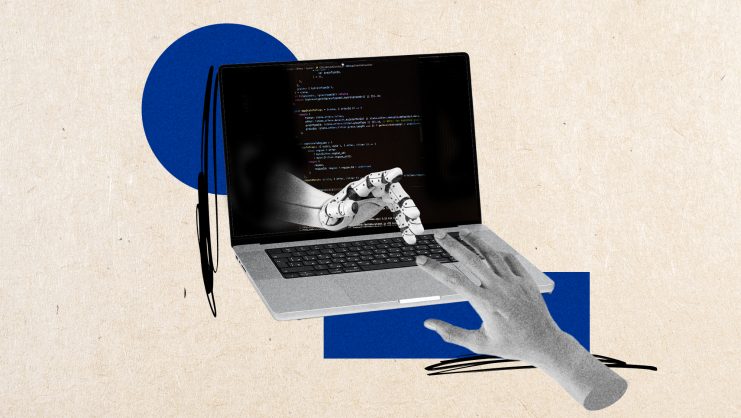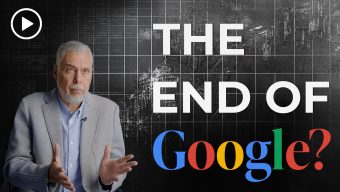Innovation is essential for business success. In fact, this is so well acknowledged these days that, according to McKinsey, 84% of executives consider it critical. Of course, the path to innovation isn’t a one-size-fits-all journey and companies can pursue innovation through various strategies, such as disruptive and non-disruptive creation.
Disruptive innovation, as developed and popularized by Clayton Christensen, involves creating new markets and value networks that challenge existing industry leaders. Uber is a prime example of this in how it shook up the traditional taxi industry by providing a more convenient and affordable alternative. While a potentially powerful tool, disruptive innovation often requires significant investment in new technologies and battling entrenched competitors.
Swedish food company Oatly, for example, is challenging the dairy industry with a lactose-free and more sustainable alternative to milk that appeals to health-conscious consumers as well as those with dietary restrictions. This innovation is forcing established dairy producers to likewise consider developing plant-based options, potentially disrupting the entire milk market.
To that point, the smartphone illustrates the concept of non-disruptive innovation in that it entered a new market without directly competing with established players. Rather than replacing existing cell phones, smartphones created a whole new market for mobile applications, transforming communication and entertainment. This innovation strategy offers a larger market potential and lower risks by leveraging existing technologies and infrastructure.
The allure of disruptive innovation lies in its potential to create entirely new markets and secure first-mover advantage. In the case of Uber, the company not only revolutionized the transportation industry but also spawned the growth of the gig economy, a trend that continues to reshape various sectors today. While disruptive innovation carries inherent risks, its potential to redefine markets and unlock exponential growth makes it a powerful strategy for companies willing to challenge the status quo.
Meanwhile, non-disruptive creation offers an alternative to challenging established players. This approach aligns with the marketing theory of the Blue Ocean Strategy developed by W. Chan Kim and Renée Mauborgne, which emphasizes creating uncontested market space through differentiation and value innovation, rather than engaging head-to-head in competition.
This allows several advantages for businesses. As mentioned, it typically carries less risk than disruptive innovation, as it avoids direct confrontation with existing players in the market and may also require lower initial investment. The potential market size for non-disruptive innovations can be vast, as businesses can tap into previously unserved customer bases by creating new categories. Additionally, companies can leverage their existing resources, infrastructure, and customer relationships to enter new markets efficiently.
The optimal approach depends on a company’s unique strengths, risk tolerance, and long-term vision.
The emergence of the smartphone created a whole new market for mobile applications, with in-app purchasing revenue surpassing $130 billion globally in 2023, according to Sensor Tower data. Companies like Apple and Google, with their established app stores and user bases, were well-positioned to capitalize on this new market opportunity. Non-disruptive creation allows businesses to explore new frontiers for growth. This approach aligns with the marketing theory of blue ocean strategy, emphasizing the creation of uncontested market space and unlocking customer value through innovation.
The choice between disruptive and non-disruptive innovation hinges on several factors. Risk-tolerant companies with a strong appetite for growth might lean towards disruptive strategies. Conversely, more conservative companies might favor the lower-risk path of non-disruption, leveraging existing resources to explore new markets. Market size also plays a crucial role: disruption often targets established markets with high growth potential, while non-disruption thrives on identifying entirely new, potentially larger markets with less competition. Ultimately, the optimal approach depends on a company’s unique strengths, risk tolerance, and long-term vision.
The innovation game is constantly evolving, with companies looking beyond disruptive technology to win. On the cutting edge of disruption, bioengineering is making significant strides. For instance, Impossible Foods isn’t just creating plant-based meat alternatives; they’re using science to recreate the heme molecule that gives meat its distinctive flavor, potentially upending the entire protein market.
Disruption isn’t limited to products alone. Subscription services with personalized delivery models are redefining industries. Dollar Shave Club disrupted the razor market, and Imperfect Foods is now shaking up the grocery industry by offering subscription boxes of cosmetically imperfect but perfectly edible produce.
And yet still, innovation isn’t solely about shaking things up. Companies are also focusing on user experience and sustainability. Nike’s Vaporfly technology with ZoomX foam exemplifies non-disruptive innovation, enhancing running shoes by offering better cushioning and energy return for athletes. Similarly, healthcare giant Abbott’s continuous glucose monitors seamlessly integrate with smartphones, making diabetes management more discreet and convenient.
The key to success lies in mastering both approaches. Disruptive innovations like Impossible Foods create entirely new markets, while non-disruption like Nike keeps existing products relevant. Companies that can adapt to changing preferences and advancements by wielding both strategies will be the future leaders. Of course, both disruptive and non-disruptive innovation drive business growth. By understanding the different approaches and aligning them with marketing theories, business leaders can make informed decisions about their organization’s innovation journey. The key lies in embracing a culture of continuous innovation, regardless of whether it’s disrupting the status quo or creating entirely new value propositions.
Disruption has evolved beyond startups dethroning industry giants. While new players like online used-car retailer Carvana still challenge traditional businesses, new trends are emerging. Ambidextrous organizations now excel at both sustaining innovation and exploring disruptive ideas. Ikea, for example, offers trendy furniture for millennials while also maintaining its reputation for affordable, functional pieces.
Fintech companies like Robinhood disrupt through gamification and user-friendly interfaces, changing how people approach finance. This shift prioritizes a user-centric experience and addresses unmet needs across industries. Even established players are embracing disruption. Companies like Lime are disrupting personal transportation with dockless electric scooters, while CloudKitchens is shaking up the restaurant industry by providing virtual kitchens for delivery-only food businesses. The future of disruption focuses less on who disrupts and more on how companies identify and meet evolving customer needs through innovation and improved user experiences.
© IE Insights.











